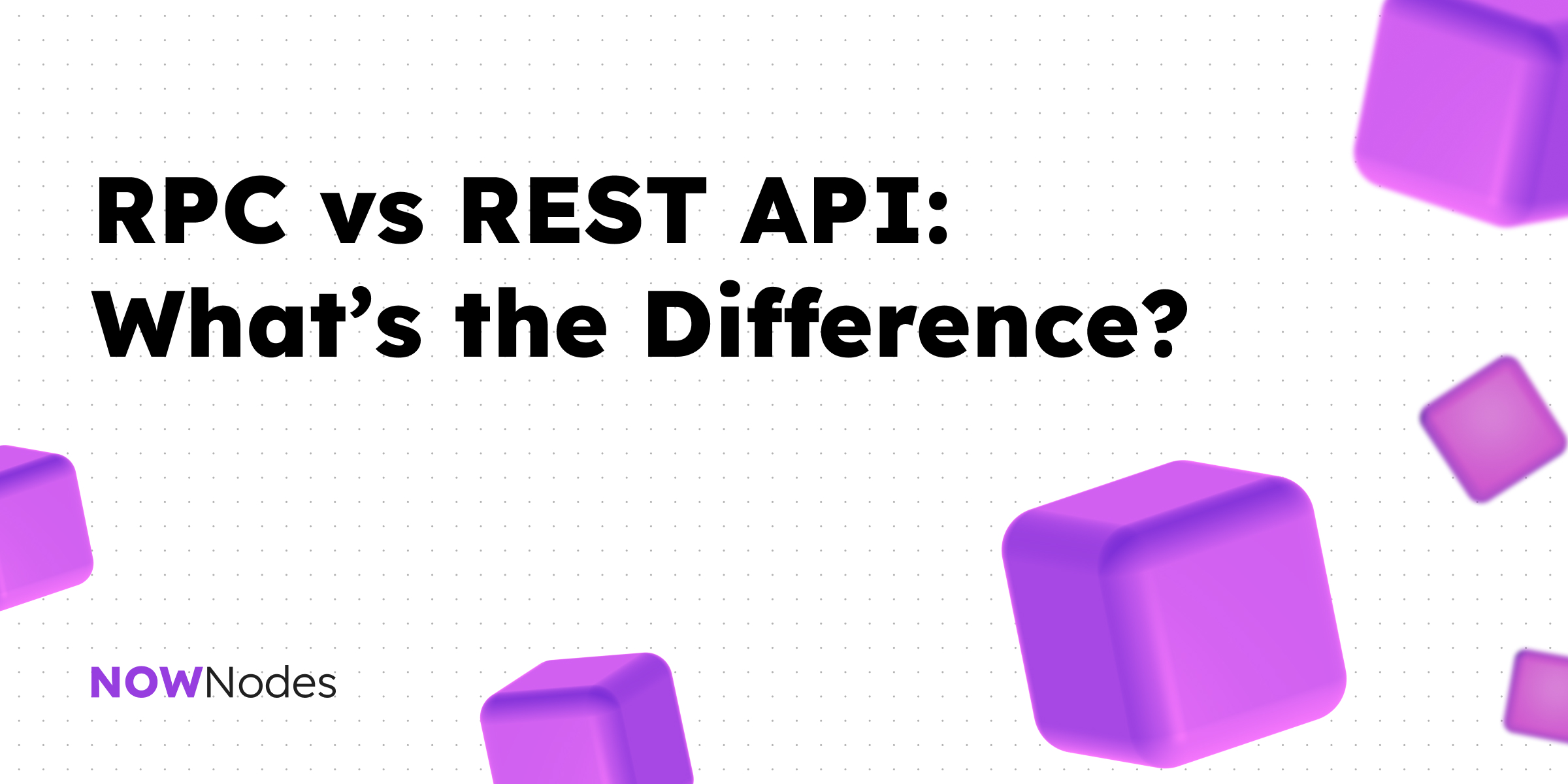As blockchain technology continues to evolve, developers must make critical decisions about how their applications interact with decentralized networks. One of the most common questions in this space is: RPC vs REST — which API model is better suited for blockchain applications?
Both approaches allow applications to communicate with blockchain nodes, but they differ significantly in design, flexibility, and performance. Understanding the difference between RPC and REST is essential for building scalable, efficient, and reliable Web3 products.
This article explores what is RPC vs REST, the technical distinctions between the two, and offers guidance on when to use RPC vs REST depending on your use case. We’ll also examine how NOWNodes provides seamless access to both API styles for over 70 blockchain networks.
What Is RPC?
RPC (Remote Procedure Call) is a protocol that enables one program to execute functions on a remote server as if they were local. In blockchain development, RPC allows direct, low-level communication with a full node.
Most blockchains, including Bitcoin, Ethereum, and BNB Chain, use JSON-RPC, a lightweight and efficient format. With RPC, developers can:
- Send and broadcast raw transactions
- Interact directly with smart contracts
- Retrieve real-time data from the blockchain
- Access block, transaction, and account-level information
RPC is performance-oriented and provides maximum control, making it the preferred choice for advanced blockchain use cases.
What Is REST?
REST (Representational State Transfer) is a widely adopted architectural style for designing web services. It relies on standard HTTP methods (GET, POST, PUT, DELETE) and treats data as accessible resources, typically through structured URLs.
REST APIs are commonly used across traditional web applications and offer:
- Human-readable and predictable endpoints
- A standardized, stateless communication model
- Easy integration with frontend frameworks and third-party services
- A more abstract interface over complex backend logic
In blockchain contexts, REST is often used to simplify data access, especially when only high-level or aggregated information is required.
RPC vs REST API: What’s the Difference?
While both RPC and REST serve as API interfaces to blockchain data, their underlying principles and ideal use cases differ considerably.
| Feature | RPC | REST |
|---|---|---|
| Communication Style | Function-based (method + parameters) | Resource-based (URL endpoints and HTTP methods) |
| Level of Abstraction | Low-level, direct interaction with node logic | Higher-level, abstracted data access |
| Flexibility | High – full access to node functionality | Moderate – depends on API design |
| Complexity | More complex – requires protocol familiarity | Easier to use – suitable for quick integrations |
| Performance | Faster – minimal overhead | Slightly slower – includes extra abstraction |
| Use Cases | Wallets, dApps, smart contracts, DeFi logic | Dashboards, explorers, analytics, user interfaces |
When to Use RPC vs REST for Blockchain APIs
Choosing between RPC vs REST API depends on your specific application needs.
Use RPC when:
- Direct communication with a blockchain node is required
- Real-time data and low latency are priorities
- You are building smart contract logic, wallets, or DeFi platforms
- You need full access to methods like
eth_call,sendrawtransaction,getblock, etc.
Use REST when:
- You want quick access to summarized blockchain data
- Simplicity and developer-friendliness are key requirements
- Your project involves data visualization, reporting, or frontend dashboards
- You need a fast integration layer without managing complex RPC interactions
Both API styles can complement each other in a single project — REST for general data access and RPC for critical blockchain logic.
How NOWNodes Supports RPC and REST API Access
NOWNodes is a blockchain-as-a-service platform that provides developers with instant access to full nodes of over 110 blockchain networks. Our platform supports both RPC and REST APIs, giving you the freedom to choose the best approach for your application.
Available networks include:
- Ethereum (ETH)
- Bitcoin (BTC)
- Polygon (MATIC)
- BNB Smart Chain (BSC)
- Litecoin (LTC), Dogecoin (DOGE), and many others
With NOWNodes, you can connect to any of these blockchains through a single interface, with no need to run or maintain your own node infrastructure.
Benefits of Using NOWNodes
- Reliable API access with 99.95% uptime
- Support for both REST and RPC protocols
- Easy onboarding with a free plan for testing and development
- Scalable infrastructure suitable for individual developers and enterprise solutions
- Dedicated endpoints for consistent performance and stability
Conclusion: Choosing the Right Blockchain API – RPC vs REST
The choice between RPC and REST APIs is not about which is objectively better, but about what your application needs.
- Use RPC when you require direct, low-level access to the blockchain for transaction processing, smart contract execution, or real-time data retrieval.
- Use REST when you need simplicity, structure, and fast access to high-level blockchain data for analytics, dashboards, or quick integrations.
By offering both options, NOWNodes empowers developers to build faster, scale smarter, and focus on delivering value — without the operational burden of managing full nodes.



